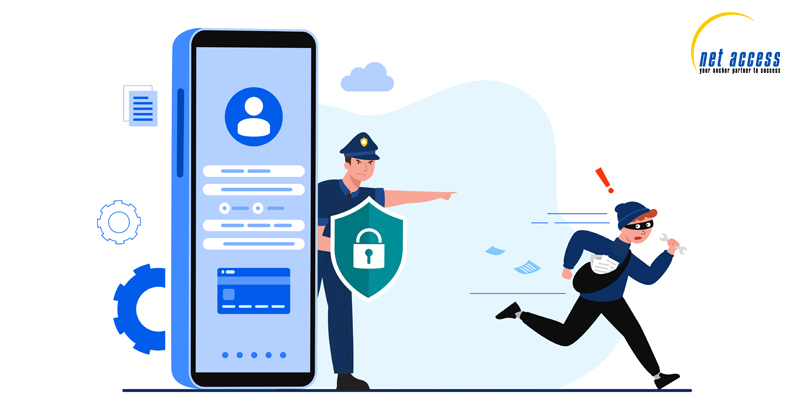
VISHING: Could Your Company Be Hacked by a Simple Phone Call?
From annoying scam calls, voice phishing, also known as vishing, has developed into one of the most advanced social engineering strategies employed by threat actors nowadays. Vishing attacks, in contrast to traditional phishing emails, exploit human trust over the phone by manipulating emotions, authority, and urgency to bypass even the most secure digital controls.
Vishing is now a preferred entry point for financially motivated and espionage-focused threat groups, targeting service desks, IT teams, and high-value employees.
This article examines the nature of contemporary vishing attacks, their perpetrators, and the steps that organizations can take to defend against this escalating threat.
What is Vishing and how does it work?
Vishing, also known as voice phishing, occurs when attackers call victims posing as reputable organizations, such as banks, government agencies, or IT support, to coerce them into disclosing private information or taking hazardous actions.
Pretexts used by attackers capitalize on:
- URGENCY: Your account will be locked unless you act immediately.
- AUTHORITY: This is IT support from corporate headquarters.
- FEAR: We detected suspicious activity on your account.
- FAMILIARITY: Using internal terms or employee names from social media.
Even trained users can be caught off guard when the voice sounds confident, reasonable, and urgent.
How Modern Vishing Attacks Work:
A typical vishing attack progresses through several carefully planned phases:
- Reconnaissance: To find phone numbers, reporting structures, and recent projects, hackers scrape publicly available information from websites, GitHub, and LinkedIn.
- Pretext Development: They fabricate plausible tales, such as “lost my phone,” “MFA reset is not working,” or “urgent payroll update, please help,” supported by actual information found online.
- Caller Setup and Spoofing: Attackers display fictional caller IDs by using VoIP and spoofing tools.
- First Contact: To establish urgency and trust, the caller uses tone, authority, and time pressure.
- Information Harvesting: They convince staff members to install software, share MFA codes, or change passwords.
- Persistence and Exploitation: Data theft, account takeover, and lateral movement are made possible by the stolen credentials.
Since there is no malicious link or phishing email to block, the voice-based channel makes it more difficult to identify this attack vector.
Vishing Threat In The Real World: UNC3944 and UNC6040:
Vishing has been elevated to a new level by two prominent threat groups:
- UNC3944: renowned for tricking help desks into resetting multi-factor authentication (MFA) credentials by posing as employees through vishing. These behaviors frequently come before ransomware deployment, data theft, and SIM swapping.
- UNC6040: Calling staff members to authorize a malicious Salesforce Data Loader application while posing as IT support. They were able to access vast amounts of CRM data as a result, which they then exploited for extortion.
Vishing is a targeted, technically supported operation that can undermine even well-established security programs when human trust is abused, as both groups show.
The Reasons Behind Why Service Desks Are Often Targeted:
Attackers commonly use the service desk as a soft entry point. Human factors can weaken policies even when they are in place:
- Under pressure to “assist,” agents may omit identity verification procedures.
- False internal numbers give the impression that callers are authentic.
- Attackers can learn call scripts and escalation paths through repeated probing calls.
- Fatigue and shift changes raise the possibility of compliance mistakes.
Attackers turn customer service into a vulnerability by taking advantage of the intrinsic helpfulness of IT employees.
Increasing The Organization’s Resistance To Vishing
A multi-layered defense strategy encompassing people, procedures, and technology is needed to combat vishing.
1. Process controls and verification:
- Prior to resetting a password or MFA, enforce positive identity verification
- Make use of out-of-band callbacks to internal directories’ official numbers.
- Turn off self-service MFA resets while an issue is still occurring.
- For high-sensitivity operations, manager approval is required.
2. Technical Protections:
- Implement MFA that is resistant to phishing
- To lessen spoofing, activate STIR/SHAKEN protocols and make use of reputation services.
- For unusual login or reset sequences, incorporate call analytics into SIEM/SOAR.
- Keep an eye out for unusual trends, such as unsuccessful logins followed by resets and successful logins.
3. Awareness and Training:
- Regular phishing awareness campaigns should incorporate vishing simulations.
- Teach staff to use public contact lists to verify unexpected calls.
- Teach students to recognize voice cues, such as scripted tone, urgency, and refusal to offer written evidence.
The Function Of Constant Monitoring
Vishing attempts that evade prevention measures can be identified with proactive monitoring:
- Keep an eye out for odd MFA registration or reset incidents.
- Monitor several accounts connected to a single phone number.
- MFA fatigue is indicated by a pattern of unsuccessful authentication attempts.
- For improved forensic visibility, link identity events to call logs.
Latest Updates: Hybrid Attacks And AI Voice Cloning
AI is driving the next development in vishing:
- Attackers are now requesting urgent approvals or money transfers by using AI-generated voice clones of executives.
- AI call scripting and automated scouting personalize scams at scale; hybrid social engineering combines phone calls, SMS and emails for increased credibility.
- Defenders are reacting at the same time, utilizing AI-powered call screening and voice anomaly detection to instantly identify fraudulent interactions.
How Can a Regular Call Still Hack a Secure Company?
Even the most safeguarded companies can be tricked by a convincing con artist on the phone, a tactic called “vishing.”
Our red team (ethical hacking) exercises have shown this time and again. When we simulated these attacks, we found the IT help desk was a common weak link. Here’s what we saw:
- Pressure beats policy: Agents would skip security rules when the “attacker” pretended to be an important person in a huge rush.
- Security checks were skipped: Service desks often failed to enforce their own multi-step verification rules.
- MFA conceded: Attackers could get multi-factor authentication (MFA) resets approved without anyone double-checking who they were.
After seeing the results, the companies we tested made critical improvements—like better verification steps and new employee training—which dramatically reduced their vulnerability.
Vishing is About Trust, Not Technology
Attackers use authority, urgency, and familiarity as weapons to control people more quickly than any exploit kit.
As a result, organizations need to:
- Provide ongoing training to employees.
- Verify identities on your own.
- Keep an eye on patterns of behavior in addition to log files.
- Every employee becomes a defensive asset rather than a liability when proactive awareness is combined with validated controls and testing.
Conclusion
Vishing is no longer just a normal/day-to-day call; it has evolved into a sophisticated psychological tool or mode that can bypass even secure firewalls and endpoint protections that you may have in place. A single convincing call can trigger a chain of compromises that cannot be tracked or imagined.
By integrating strong process checks, layered monitoring, and continuous employee awareness, companies can turn their most vulnerable asset, which is employees and build a trust into them and making them as a strong line of defense.
At Net Access India Limited, we believe that cybersecurity is not just about protecting systems or your web / mobile applications, but building a stronger, secure environment that builds the trust of your employees and customers. Our CERT-In empanelled cybersecurity team helps organizations strengthen their human and technical defenses through VAPT assessments, phishing and vishing simulations, awareness training programs, which are updated as per the market, and provides you with continuous 24×7 monitoring services to have peace of mind.
If you would like to know how resilient your organization is against a real-world vishing or social engineering attack, contact us via email or call us, and we would be happy to answer your queries by providing you with case studies and market insights.

